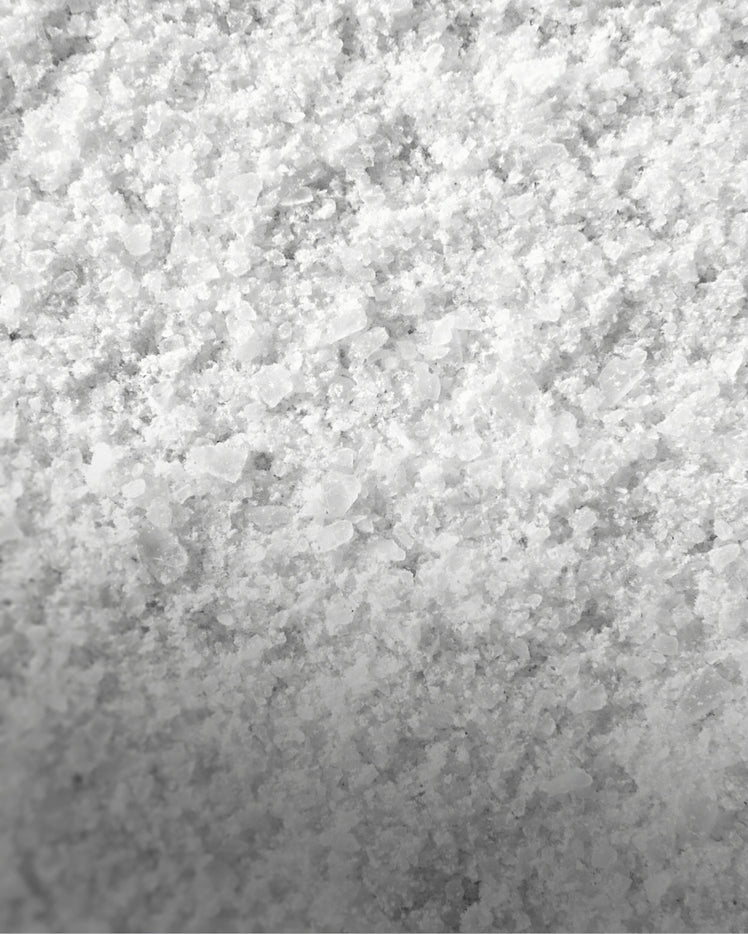About the Ingredient
Potassium alum (KAl(SO₄)₂·12H₂O) is a naturally occurring crystalline mineral salt traditionally used for its astringent, antibacterial, and styptic properties. When applied to the skin, it forms an invisible salt layer that inhibits the growth of odor-causing bacteria without clogging pores or interfering with sweat production.
It is commonly found in natural deodorant crystals, post-shave toners, and preservative systems in clean cosmetics. Unlike synthetic aluminum salts, potassium alum has a larger molecular structure that limits its skin absorption—making it a preferred alternative in natural personal care.
Why You Would Use Potassium Alum
- To prevent body odor without blocking perspiration
- As a natural astringent to refine skin and soothe irritation
- In deodorants and aftershaves as a gentle yet effective antimicrobial
- To support formulation preservation and shelf life
- For minimalist, fragrance-free body care routines
Clinical Findings
| Study | Participants & Methods | Key Results | Reference |
|
Deodorant & Astringent Performance |
Formulated lotion, cream, and gel evaluated for functional effects |
Alum-based formulations were effective as deodorants and after-shave astringents, offering skin-soothing and odor-reducing benefits in consumer-appropriate formats. |
Alzomor et al., 2012 |
|
Odor-Causing Bacteria Reduction |
In vitro testing against skin flora |
Potassium alum significantly inhibited growth of malodor causing bacteria. |
Nur Adani et al., 2016 |
Behind The Science
Potassium alum works through two main mechanisms:
- Astringency – It contracts skin tissues, helping to reduce pore size and limit surface oil.
- Bacteriostasis – It interferes with bacterial metabolism on the skin, especially targeting Corynebacterium and Staphylococcus species that produce odor.
Key Difference From Conventional Aluminum Compounds
Unlike aluminum chlorohydrate or aluminum zirconium (commonly found in antiperspirants), potassium alum:
- Has a larger molecular size, making it unable to penetrate the skin’s barrier in measurable amounts
- Does not block sweat ducts or inhibit perspiration
- Is considered a surface-level antimicrobial, not an internalized antiperspirant
This distinction is important for consumers avoiding aluminum due to concerns about sweat gland blockage or systemic absorption.
How and Where It's Made
Potassium alum naturally crystallizes in volcanic regions or is extracted from bauxite and alunite ores. It is then purified and recrystallized to form deodorant-grade blocks, powders, or flakes. Its stability, solubility, and neutral scent make it highly versatile in natural and eco-conscious formulations.
Use in Ancient Medicine
Historically, potassium alum was used across Asia, the Middle East, and Europe in water purification, wound care, and ritual cleansing. In grooming traditions, it served as a post-shave soother, mouth rinse, and even natural styptic for minor cuts—valued for its cooling and cleansing effect on the skin.
Symbolism
Potassium alum embodies clarity, purity, and refinement. Its crystalline structure and skin-purifying action mirror the energetic themes of boundaries, calm, and simplicity. This mineral invites a return to basic, effective self-care, free of clutter or complication.
INFORMATION provided is intended for informational purposes only and is not meant to diagnose, treat, cure, or prevent any disease. Statements have not been evaluated by Health Canada or the FDA. Please consult a qualified healthcare provider before using essential oils for therapeutic purposes.
References
- Seo H. S. (2012). An Experimental Study of the Anti-oxidant and the Anti- inflammatory Effects of Alum and Burnt Alum. Journal of pharmacopuncture, 15(2),11–14. https://doi.org/10.3831/KPI.2012.15.2.011
- Alzomor, A. K., et al. (2012). Formulation and evaluation of potash alum as deodorant lotion and after shaving astringent as cream and gel. International Current Pharmaceutical Journal, 1(10), 320–324.
- Nur Adani, R., et al. (2016). Potassium aluminum sulfate inhibits growth of malodor-producing skin flora. Journal of Clinical Health Sciences.

